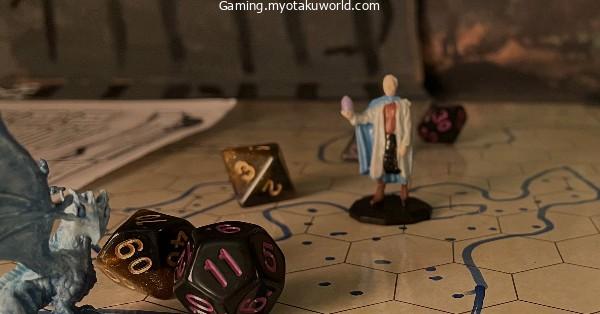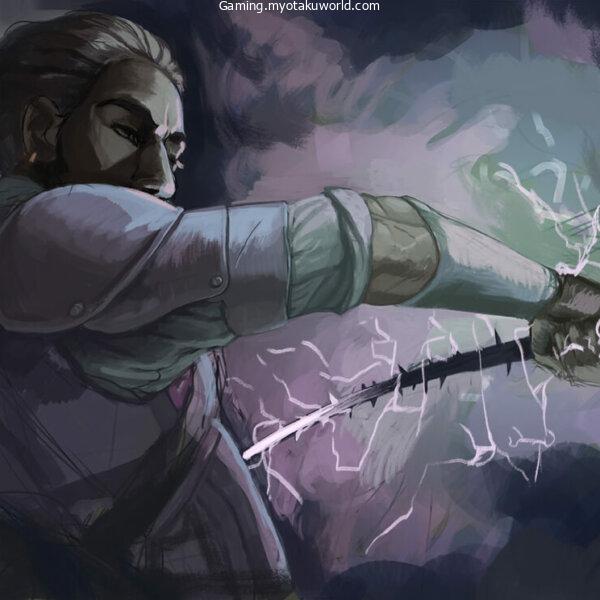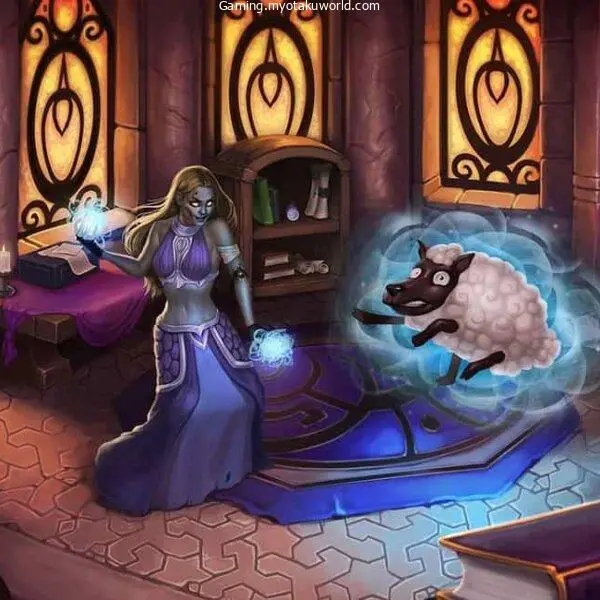D&D has 13 major damage types. Every monster, NPC, and even your PCs may have some resistances and vulnerabilities to these types.
What if there were another way to handle these types of damage?
Absorb Element might be a good choice for you next time you get a fireball thrown at your body. This spell name is quite interesting and has many implications.
What damage types does this spell work with? How does the spell work? What happens to all the energy you have gained by absorbing the elements?
Find out more in our Absorb Elements 5e Guide.
What are Absorb Elements?
This spell is from Xanathar’s Guide to All. Here are the stats:
- Level 1 abjuration
- Casting Time: 1 reaction. This is what you take when you take acid or cold, fire, lightning, lightning or damage
- Spell List: Druid, Ranger, Sorcerer, Wizard, Artificer
- Range: Self
- Components: S
- Duration: 1 round
The D&D spell collects some of the incoming energies, decreasing their effect and storing them for your next melee attack.
You are immune to the triggering type of damage until the beginning of your next turn. The spell ends when the target is hit with a melee strike on your next turn.
Cast this spell with a spell slot at 2nd or higher level. The extra damage is increased by 1d6 for every slot level above 1.
Let’s take a look at this spell. It is the first-level spell for abjuration that requires a reaction before it can be cast.
The spell can be cast if you are subject to acid, fire, lightning, or thunder damage. You only need a somatic ingredient and the spell lasts for one round.
These types of energy can cause you to be hit twice. From the damage type up until the beginning of your next turn, you have resistance and you can store some energy.
If you hit the target with melee attacks, in addition to regular damage the target will also take 1d6 damage of that type. You can also increase the spell’s damage to store more.
For example, a fireball being thrown at you. You can then cast the spell to absorb some of that fire energy.
You can resist fire damage until your next turn, then absorb all the energy. You can channel the energy from your melee attack if you are close enough to an enemy.
This will give you an additional 1d6 fire damage for your melee attack. The spell is over.
It’s great fun and you will discover that it is very enjoyable to be able to absorb any damage.
WHAT DOES ABSORB ELEMENTS DO IN 5E?
The ability Absorb Elements is used as a response to taking damage from various elements (acid, cold, fire, lightning, or thunder). You will have immediate protection against that specific kind of elemental damage for the duration of one full round of combat, including protection against the spell or effect that prompted you to use Absorb Elements in the first place.
“The amount of damage of a particular type that is dealt to a creature or an object that has resistance to that type is halved” (PHB 197). Therefore, if the spell would have caused you to take 10 or 11 fire damage, you would only take 5 fire damage after casting Absorb Elements (due to the rule that states damage must be rounded down — Player’s Handbook Chapter 7).
Your next melee attack is empowered after you have “absorbed” the damage, dealing an additional 1d6 damage of whichever element you absorbed. If you cast Absorb Elements to absorb fire damage, then your next melee attack will deal an additional 1d6 fire damage in addition to the normal amount.
Finally, the spell Absorb Elements can be upcast to increase the bonus melee attack damage by an additional 1d6 for every spell slot level above the first. This can be done once per spell level. It does not make any difference to the spell’s defensive power if you upcast Absorb Elements.
Getting Resistance
This spell has two parts. The first is defensive. When you cast this spell with a reaction, you will be immune to the selected damage type.
The spell absorbs some of the energy and your somatic movement will be affected. This means that you only take half the damage. A fireball that causes 36 points of damage now does only 18.
You’ll also be immune to the damage type you choose until your next turn. This is useful if you’re fighting multiple enemies using the same element.
Dealing with Damage
You must make a melee attack to inflict damage on your enemy. This is a problem because most people who can cast the spell are either ranged fighters or casters.
You might find it difficult to get close enough to your target with your melee weapon if your combat strategy is to be at the back, letting others do the heavy lifting.
This can work for you if you’re not a novice to melee combat, even if you’re a caster. Your strike absorbs the elemental damage from the attack and sends it back to the enemy.
You take 1d6 damage to the elemental damage type. If you cast the spell, you get even more.
Monsters are not immune to elemental damage. Fire demons can throw fireballs, but they can also take them as they are resistant to elemental damage.
Some are even immune. You might be taking damage that you cannot fire back, so keep this in mind.
Using Absorb Elements against Humanoid Characters

As you probably know, elementals, monsters, and other creatures can also cast elemental magic.
A bandit king might have a magic weapon or potion that allows him to cast these types of damage.
Perhaps a gnoll, ogre, or other creature has gotten a ring containing fireball and is using it in a reckless manner.
The spell shines here because you can absorb the energy from the enemy and then fire it at them.
It’s quite a fun spell to bounce a curse back, and you can watch your enemy’s faces as you do it!
It’s also a great idea to create an adventure when your mundane enemies have access to magical weapons and abilities.
This will spice up your 100th encounter with goblins!
What are Reactions?
You’ve probably seen spells that cost actions to cast as well as bonuses actions. Absorb Elements, however, is a spell that requires a reaction.
What is a reaction? Here’s the description of a reaction according to D&D rules:
Reactions are instant responses to triggers of any kind. They can be on your turn or someone else’s.
This includes potential attacks made by enemies leaving your zone, readied actions that have a trigger attached, as well as spells that have readied activities.
The trigger to cast the spell is activated when an enemy hits you with one of six damage types.
The spell can be cast on the enemy’s turn. Your reaction does not cost you any of your regular actions.
You will still be able to take your movement actions and attack action during your turn.
This spell will let you know when it is possible to cast, and you’ll be able to absorb any elemental damage that the attack causes as long as your 1st level slot spell slot is available.
Are Spells able to be infused with Elemental Energy?
No, spells are not allowed to be affected by the elemental energy. If you’re a sorcerer, the elemental energy will not be transferred to your next spell.
Unfortunately, the elemental energy does not transfer to your dagger. This might not be the best decision for you.
A dagger that does additional D6 acid damage is not something most sorcerers will use to harm a monster.
It might be possible for some DM’s to make it. The excess energy flies through spells, despite all the elements.
You might find it a bit silly to pretend you are a cryomancer, and then fire energy at your next frost attack.
They might still rule that your next spell will deal an additional d6 damage to reflect the increase in magical energy.
This is a great house rule. However, it will depend on how your players feel and how often they use the spell.
Regardless of what happens offensively, it’s still quite powerful in defense. Nobody is going to give up on elemental resistance.
IS ABSORB ELEMENTS 5E A GOOD SPELL?
Yes, “Absorb Elements” is a very powerful and helpful spell that can be used all the way up until the very end of the game without losing any of its value. Because flat buffs such as resistance (-50% damage) scale with the difficulty of the game, there will never be a time when it feels like Absorb Elements isn’t doing enough defensively to protect the player.
Although the additional 1d6 of elemental damage that is dealt as a result of upcasting can be helpful for particular builds and in particular circumstances, this is not nearly as important as maintaining the utility of Absorb Elements well into the late game.
Because it only requires a spell slot of the first level, Absorb Elements is an option that should be considered for inclusion in any party at any time.
In spite of this, it is not the type of spell that is typically required to be learned during the early levels of the game (1-4). At these levels, the incidence of enemies that cast spells and those that deal elemental damage tends to decrease (in most DnD universes, anyway).
ABSORB ELEMENTS 5E COMPARED SHIELD
If you are a Sorcerer or a Wizard, you will have the option to choose between two different reaction spells as soon as you reach the first level of play. These spells are called Shield and Absorb Elements. You gain +5 Armor Class and immunity to magic missiles for the next round of combat when you use Shield.
Shield is a 1st-level spell that, much like Absorb Elements, remains relevant and useful throughout any and all Dungeons & Dragons campaigns. Because physical damage is present in almost every encounter in Dungeons & Dragons, players typically make more frequent use of shields, whereas elemental damage is more infrequently encountered.
In the early levels (1–4), when the disparity between physical damage and magical damage is at its greatest, shield is also more useful than at any other time in the game.
However, Shield and Absorb Elements cover two different defensive scenarios, so there is no reason why you can’t have both of them at your disposal. Be aware, however, that because they both demand a reaction from you, you won’t be able to use either one of them during the same round of battle.
FAQs
How do Absorb Elements look?
It’s pretty cool, in a few words! The spell description can be used to make your characters do many things. Some characters may raise their arms and resist the elemental attack. They absorb the most damaging energy.
Some artificers may deploy a shield or gadget that allows them to catch the attack and still take the damage before they fire back. This will depend on whether they were hit from the range or melee. A druid might weave some magical grass or branches to catch the attack in melee.
Although you can do almost everything your character would do to absorb the brunt, the description does not have to end there. The enemy can be made to glow with thunder, cold, or fire energy. Maybe their weapon will also glow briefly in that energy. All that power is then sent back to the enemy when they strike off.
What about the Other Damage Types?
You probably know that the Absorb Elements spell only affects five types of damage: thunder, acid, lightning, fire, cold, and fire. This leaves out bludgeoning and force, necrotic as well as psychic, radiant, and toxin. These damage types can be overlooked if you think about it. There are three types of damage: piercing, bludgeoning, and slashing. These damage types don’t have magic behind them. Your character is simply being hit in the face by a sword or mace. There is no magic or absorbable material.
Toxin and psychic damage can quickly affect the mind and body. Poisoning is hard to resist and it’s often too difficult to send back. The same applies to physic injury, which is mind-to-mind and can’t be channeled into a melee weapon attack. Radiant and necrotic energies are too powerful to not be absorbed. Although things like cold and fire are common in nature, we can also feel them. It is possible to get burned by a fire or get cold in a snowstorm. Radiant and necrotic damage can be attached to higher powers.
It can be dangerous to absorb the power of evil or good deity without being ready to do so. You also may not have the control or focus necessary to direct that power into your weapon to strike back at your adversary. These are just a few of the reasons DMs come up with to explain away rule restrictions. It’s definitely better than saying “Because that’s the way the rules work!”
When should you use Absorb Elements?
This spell requires a reaction. It is, therefore, best to use it when you are faced with powerful elemental attacks. If you are unable to take an elemental hit reliably and fail the saving throw to reduce the damage or to half, you should try to absorb as much as you can.
The spell states that you trigger the spell when you take damage. You can still roll your saving throws to prevent the damage from being done before casting it. This is a great way to save half of the damage by using Absorb. You can get half the damage back with Elements. This spell can be used to make up the difference if you aren’t confident with your dice rolls and your HP.









